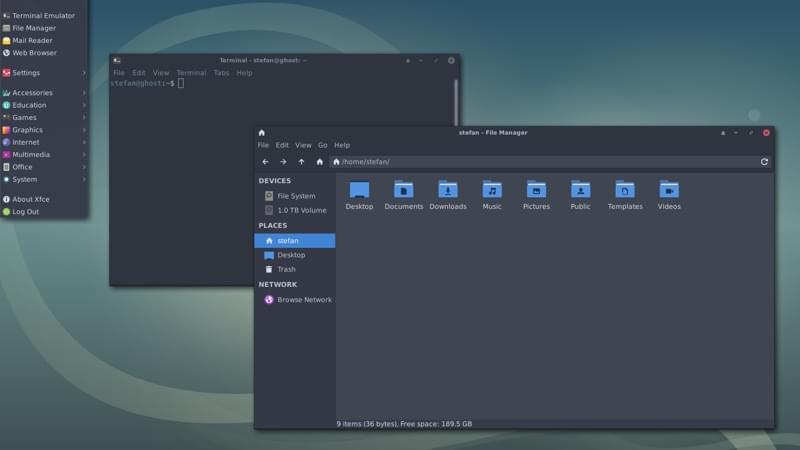Introduction to Linux Database Management
In the modern digital landscape, data is the lifeblood of applications, and Linux is the heart that pumps it. Whether you are running a high-traffic e-commerce platform, a microservices architecture, or a simple content management system, the intersection of the Linux Operating System and database technologies is where the magic happens. For any aspiring System Administrator or Linux DevOps engineer, mastering the deployment, management, and optimization of databases on Linux is a non-negotiable skill.
The dominance of Linux in the server market is undeniable. From Ubuntu Tutorial guides for beginners to enterprise-grade Red Hat Linux deployments, the stability and flexibility of the Linux Kernel make it the ideal host for relational database management systems (RDBMS). When we talk about a Linux Database, we are predominantly referring to open-source giants like MySQL Linux and PostgreSQL Linux. These systems rely heavily on underlying Linux subsystems, including Linux File System management, Linux Networking, and Linux Memory Management.
This comprehensive guide will take you deep into the technicalities of hosting databases on Linux. We will move beyond simple installation instructions and explore schema design, advanced SQL querying, transaction management, and the integration of Python Scripting for automation. Furthermore, we will touch upon security practices involving Linux Firewall configurations and SELinux context, ensuring your data remains secure in an increasingly hostile digital environment.
Section 1: Installation, Architecture, and Service Management
Before diving into SQL, one must understand the infrastructure layer. A database does not exist in a vacuum; it interacts intimately with the Linux Server resources. Choosing the right Linux Distributions—whether it be Debian Linux, CentOS, Fedora Linux, or Arch Linux—can influence package availability and update cycles. However, the core concepts of service management remain consistent across most modern distributions using systemd.
Package Management and Service Control
In a production environment, you rarely install databases from source unless you have specific compilation requirements involving GCC or C Programming Linux dependencies. Instead, you utilize package managers like apt (for Ubuntu/Debian) or dnf (for RHEL/CentOS). Once installed, managing the process lifecycle is handled by the systemctl command, a staple in Linux Administration.
Below is a practical example of setting up PostgreSQL on a Debian-based system, checking its status, and ensuring it starts on boot. This highlights the interaction between the database application and the Linux System Administration layer.
# Update package lists to ensure we get the latest version
sudo apt update && sudo apt upgrade -y
# Install PostgreSQL and its contrib package for additional utilities
sudo apt install postgresql postgresql-contrib -y
# Check the status of the service using systemd
# This is crucial for troubleshooting Linux Server issues
sudo systemctl status postgresql
# Enable the service to start automatically on Linux boot
sudo systemctl enable postgresql
# Switch to the postgres user to access the database CLI
# This demonstrates Linux Users and Permissions management
sudo -i -u postgres psqlFile System and Permissions
Databases are I/O intensive. Understanding Linux Disk Management is vital. Production databases often reside on logical volumes managed by LVM (Logical Volume Manager) or across multiple disks configured in RAID for redundancy. The database files must have strict Linux Permissions. If the permissions on the data directory (e.g., /var/lib/mysql or /var/lib/postgresql) are incorrect, the service will fail to start. This is a common pitfall where knowledge of chown, chmod, and File Permissions is essential.

Section 2: Core SQL Operations and Schema Design
Once the infrastructure is secure, the focus shifts to the data itself. SQL (Structured Query Language) is the standard for interacting with relational databases. Whether you are using a Linux Web Server running Apache or Nginx to serve content, the backend logic will invariably query the database.
Designing a Robust Schema
A well-designed schema enforces data integrity. In this example, we will create a schema for a hypothetical “DevOps Inventory” system. This demonstrates creating tables with specific data types, primary keys, and foreign key constraints. This is fundamental for any Linux Development project involving data persistence.
-- Create a new database for our inventory system
CREATE DATABASE devops_inventory;
-- Connect to the database (Command varies by client, standard SQL below)
\c devops_inventory;
-- Create a table for Server Categories
CREATE TABLE server_categories (
category_id SERIAL PRIMARY KEY,
category_name VARCHAR(50) NOT NULL UNIQUE,
description TEXT
);
-- Create a table for Servers with a Foreign Key relationship
-- This enforces referential integrity within the Linux Database
CREATE TABLE servers (
server_id SERIAL PRIMARY KEY,
hostname VARCHAR(100) NOT NULL,
ip_address INET NOT NULL, -- PostgreSQL specific type for IP addresses
category_id INT REFERENCES server_categories(category_id),
os_distribution VARCHAR(50) DEFAULT 'Ubuntu 22.04',
last_maintenance TIMESTAMP DEFAULT CURRENT_TIMESTAMP,
is_active BOOLEAN DEFAULT TRUE
);
-- Insert sample data into categories
INSERT INTO server_categories (category_name, description)
VALUES
('Web Server', 'Frontend Nginx and Apache servers'),
('Database', 'Primary and Replica SQL nodes'),
('Cache', 'Redis and Memcached nodes');
-- Insert sample data into servers
INSERT INTO servers (hostname, ip_address, category_id, os_distribution)
VALUES
('web-01', '192.168.1.10', 1, 'Ubuntu 22.04'),
('db-primary', '192.168.1.20', 2, 'Red Hat Linux 9'),
('cache-01', '192.168.1.30', 3, 'Debian 11');This SQL snippet demonstrates the creation of a relational structure. Note the use of the INET type, which is specific to PostgreSQL and highly useful for Linux Networking documentation. By enforcing constraints like UNIQUE and REFERENCES, we ensure that the application logic (perhaps written in Python Linux scripts) cannot accidentally corrupt the data state.
Section 3: Advanced Techniques: Transactions and Indexing
As your Linux Database grows, simple queries are no longer sufficient. You need to ensure performance through indexing and data consistency through transactions. This is where the role of a Database Administrator overlaps with System Monitoring and Performance Monitoring.
The Power of ACID Transactions
ACID (Atomicity, Consistency, Isolation, Durability) is the cornerstone of reliable database transactions. In a Linux Automation workflow, such as an Ansible playbook updating server states, you want to ensure that updates happen completely or not at all. If a script crashes halfway through, the database shouldn’t be left in a partial state.
The following example demonstrates a transaction where we decommission a server. We must archive the server log and delete the server record simultaneously. If one fails, both must roll back.
-- Start the transaction block
BEGIN;
-- Step 1: Insert the server to be deleted into an archive table
-- Assuming an 'archived_servers' table exists
INSERT INTO archived_servers (original_id, hostname, archived_at)
SELECT server_id, hostname, NOW()
FROM servers
WHERE hostname = 'web-01';
-- Step 2: Delete the server from the active table
DELETE FROM servers
WHERE hostname = 'web-01';
-- Simulation of a check:
-- If the number of affected rows in the DELETE is 0, we might want to rollback
-- However, in standard SQL blocks, we commit if no errors occurred.
COMMIT;
-- If any error happened above, the database would auto-rollback
-- or we could issue a ROLLBACK command manually.Optimizing with Indexes
Without indexes, the database must scan every row (a full table scan) to find data, which consumes excessive CPU and I/O, visible in tools like htop or the top command. Indexes are data structures (usually B-Trees) that allow the database to find rows quickly.
![Xfce desktop screenshot - xfce:4.12:getting-started [Xfce Docs]](https://docs.xfce.org/_media/xfce/4.12/slider-desktop.jpg)
-- Create an index on the IP address column
-- This speeds up lookups for Linux Networking audits
CREATE INDEX idx_servers_ip ON servers(ip_address);
-- Create a composite index for queries filtering by OS and Active status
-- Useful for dashboards monitoring specific Linux Distributions
CREATE INDEX idx_os_active ON servers(os_distribution, is_active);
-- Analyze the query plan to verify index usage (PostgreSQL specific)
EXPLAIN ANALYZE SELECT * FROM servers WHERE ip_address = '192.168.1.20';Section 4: Automation, Security, and Python Integration
In the era of DevSecOps, managing databases manually via the Linux Terminal is rarely scalable. Automation and security hardening are paramount. This involves configuring the Linux Firewall (using iptables or ufw), managing Linux SSH keys for secure access, and using scripting languages like Python to automate interactions.
Python Automation for Database Tasks
Python Scripting is a favorite among Linux DevOps professionals. Using libraries like psycopg2 (for PostgreSQL) or mysql-connector, you can write scripts to perform backups, health checks, or data migration. This integrates seamlessly into Linux Automation pipelines.
Here is a robust Python script that connects to a database, performs a query, and handles errors gracefully—a critical pattern for System Programming.
import psycopg2
from psycopg2 import OperationalError
def create_connection(db_name, db_user, db_password, db_host, db_port):
connection = None
try:
connection = psycopg2.connect(
database=db_name,
user=db_user,
password=db_password,
host=db_host,
port=db_port,
)
print("Connection to PostgreSQL DB successful")
except OperationalError as e:
print(f"The error '{e}' occurred")
return connection
def execute_read_query(connection, query):
cursor = connection.cursor()
result = None
try:
cursor.execute(query)
result = cursor.fetchall()
return result
except OperationalError as e:
print(f"The error '{e}' occurred")
# Example Usage
# Ideally, credentials should be loaded from Environment Variables for Linux Security
connection = create_connection("devops_inventory", "postgres", "secure_password", "127.0.0.1", "5432")
if connection:
select_users = "SELECT hostname, ip_address FROM servers WHERE is_active = TRUE"
servers = execute_read_query(connection, select_users)
for server in servers:
print(f"Active Server: {server[0]} at {server[1]}")
connection.close()Infrastructure as Code and Containerization

Modern Linux Cloud environments (like AWS Linux or Azure Linux) rely on Infrastructure as Code. Instead of manually installing MySQL, you might define it in a Docker container. Linux Docker and Kubernetes Linux workflows allow for reproducible database environments. By defining your database state in code, you can apply static analysis tools to check for misconfigurations before deployment, enhancing Linux Security.
Section 5: Best Practices and Optimization
To maintain a healthy Linux Database environment, adhere to the following best practices:
- Regular Backups: Use Linux Backup tools. For PostgreSQL, automate
pg_dumpviacron. For MySQL, usemysqldump. Store these backups off-site or in object storage. - Security Hardening: Never allow root login remotely. Configure iptables to only allow connections on port 5432 (PostgreSQL) or 3306 (MySQL) from trusted application servers. Enforce SELinux policies to restrict the database daemon’s access to the file system.
- Monitoring: Use Linux Utilities like
vmstat,iostat, andhtopto monitor disk I/O and memory usage. If swap usage is high, tune your database configuration (e.g.,shared_buffersin Postgres) to better utilize RAM. - Keep Updated: Regularly update your Linux Distributions and database packages to patch security vulnerabilities.
Conclusion
Mastering Linux Database administration is a journey that spans across operating system fundamentals, SQL proficiency, and modern DevOps practices. From the initial installation using Linux Commands to optimizing query performance with indexes and automating workflows with Python Scripting, the skills covered in this article form the bedrock of reliable system architecture.
As you continue to explore Linux Administration, remember that the database is often the most critical component of your stack. Treat it with care, secure it with diligence using tools like firewalls and strict permissions, and monitor it proactively. Whether you are managing a single Ubuntu VPS or a sprawling Kubernetes cluster, the principles of data integrity and system stability remain the same. Keep experimenting with Linux Tools, refining your SQL, and automating your infrastructure to build robust, scalable systems.




